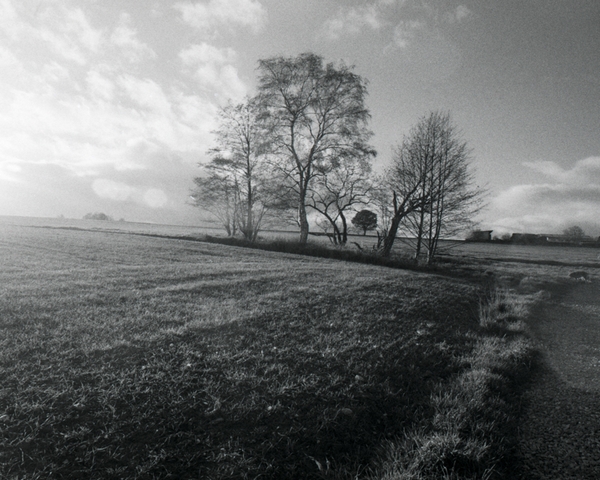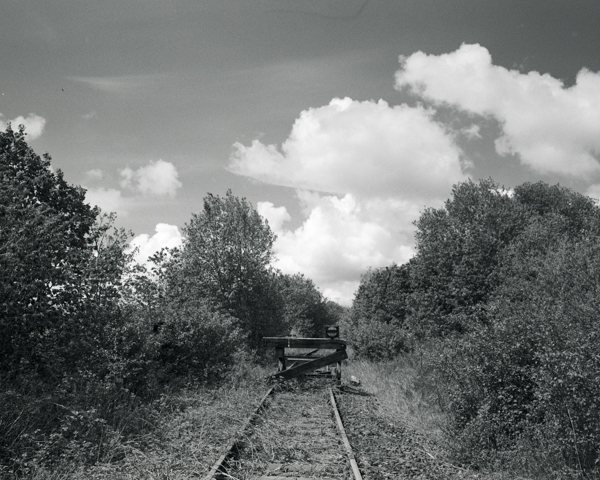FX55 Film Developer – our experience
Are you looking to try a different film developer? If, so FX55 has been described as “the last of the great film developers”.
By Christopher Osborne.

This shot of the Rosenmontagszug Carnaval in Rheinboellen, Germany was processed with FX55 film developer.
Are you looking to try a different film developer? If, so here’s something that could change your film photography in 2024. FX55 film developer is worth a try.
FX55 has been described as “the last of the great film developers”. It was developed by Geoffrey Crawley in 1982 towards the end of the film era.

Detailing on Pete Swann’s Greek Temple camera.
What does FX55 do to negatives?
The first reason to use FX55 is the visual effect that it produces. The highlight to brighter mid-tone areas are bright and this helps to make images that pop. The results are pleasantly contrasty. Grain is rendered as fine and sharp. FX55 produces very sharp images as it is a high-acutance developer. This means that the boundary between blacks and white are slightly chemically sharpened.
The overall effect is to create results that might be compared to Rodinal but with a much smaller grain structure. (think sand rather than small pebbles). The closest commercially available developer is XTol. The results are similar, although XTol contains far more Phenidone.
Finally, FX55 is reported to raise the film speed by ½ to 1 stop. I’ve used times from the Massive Dev chart and they are all very accurate.

A portrait from a 645 negative shot on Foma 100 and developed in FX55.
How easy is it to use?
Crawley’s FX55 recipe requires two parts. Part A is a stock solution that is diluted 1:9 when using the developer. This has chemicals that provide the accelerator and controls and maintains the acidity of the developer.
Part B contains the development agent. FX55 requires a tiny amount of Phenidone together with Vitamin C. Because the required quantity of Phenidone is so small, Crawley diluted the Phenidone in Propylene Glycol (which sounds scary but is used in the food industry). This prevents oxidation and allows the photographer to measure sensible quantities as one litre of working solution requires just 0.1g of Phenidone. The second part of Part B is Ascorbic Acid (Vitamin C), and this is added to the working solution as the final step. 1 Litre of developer requires just 1.3g, so you will need some jeweller’s scales to measure this amount.
Crawley reported that the working solution lasts for 36 hours, so if you are interrupted, the working solution will last.

The end of the line.
Where do I get FX55?
FX55 is not a widely available developer, however, English photographic retailer Nik and Trick is selling a revised version. This revised version has the Vitamin C already dissolved in the Part B solution. See https://ntphotoworks.com/product/geoff-crawleys-fx-55/.
This version has different development times to the original, and Nik and Trick have created a database of times for the most common film stocks.
For those who like a little more adventure in the darkroom, you can make your own. Creating FX55 is straightforward, and will take less than ten minutes. You will need a thermometer, a mixing jug, a stirrer a set of kitchen scales and a set of jeweller’s scales. The chemicals can be purchased on eBay, Amazon or through some specialist photographic shops. The recipe is available on the internet.
FX55 is not as convenient as a single solution developer. That said, I find that mixing the working solution takes less than 5 minutes.

Another shot of the Rosenmontagszug Carnaval in Rheinboellen, Germany.
Environmental considerations
FX55 is a Vitamin C based developer and was designed to avoid the use of traditional development ingredients such as Metol, and Hydroquinone. It uses minimal quantities of Phenidone. This reduces the risk of skin irritation and also produces waste that is less harmful to the environment.

FX55 film developer delivers bright highlights and small sharp grain.
History
FX55 film developer was developed by British photographer and photographic editor Geoffrey Crawley, and the formulation was published in Amateur Photographer magazine in 2008. FX55 was not sold commercially and the recipe is available for use and in the public domain (Amateur Photographer magazine should be credited).
Crawley had developed the Acutol range of developers as well as FX50, and these developers were sold by Paterson. FX55 is believed to be a refinement of FX50.
You can see more of Christopher Osborne’s photography on Instagram at @christopher.image.photography.
Nik & Trick’s FX55 film developer variant can be found here https://ntphotoworks.com/product/geoff-crawleys-fx-55/
John Finch of Pictorial Planet has created a series of videos on FX55 film developer. Here is a link to the introductory video. https://www.youtube.com/watch?v=zBYJyZ6F-HY
Images © Christopher Osborne 2024.
You might also be interested in this article on The Rosenmontagszug Carnival and a happy Analogue “Mistake”. https://silvergrainclassics.com/en/2023/03/an-analogue-mistake-and-a-perfect-rosenmontagszug-carnaval/
You can find an index to the entire collection of SilvergrainClassics magazines here https://silvergrainclassics.com/en/magazine/index-of-articles/

